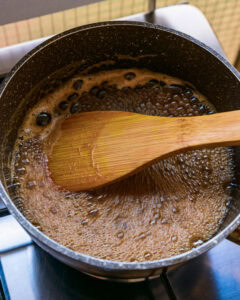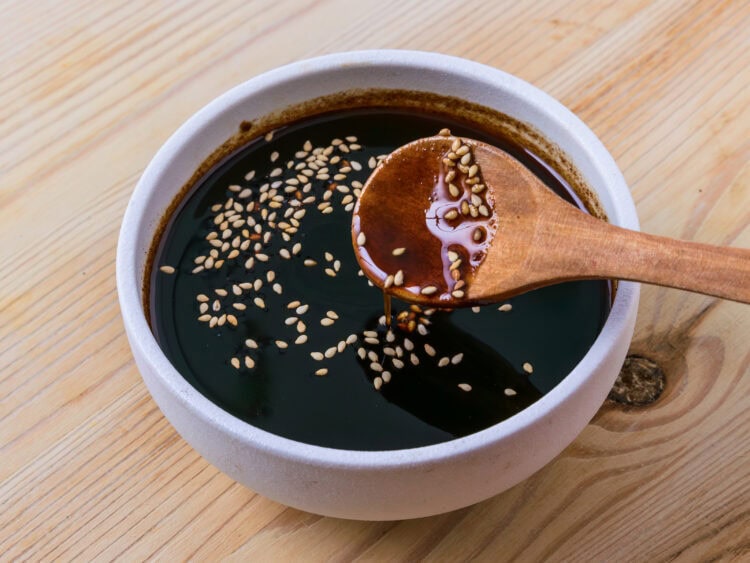A delicious Unagi sauce recipe for all your Japanese glazes and dips
Unagi no tare, Kabayaki sauce, Nistume sauce… In Japan, Unagi sauce goes by several different names, but one must have caught your attention: “eel sauce”.
As they say, don’t judge a book by its cover. You’ll be surprised to learn that this delicious sauce only combines 4 very accessible ingredients and no eel in sight (at least not anymore…)!
What is Unagi Sauce?
Japanese cuisine has a wide range of sauces, and this one has its own charm despite its somewhat intriguing name. With mirin and soy sauce as the main ingredients, Unagi sauce is quite similar to Teriyaki sauce.
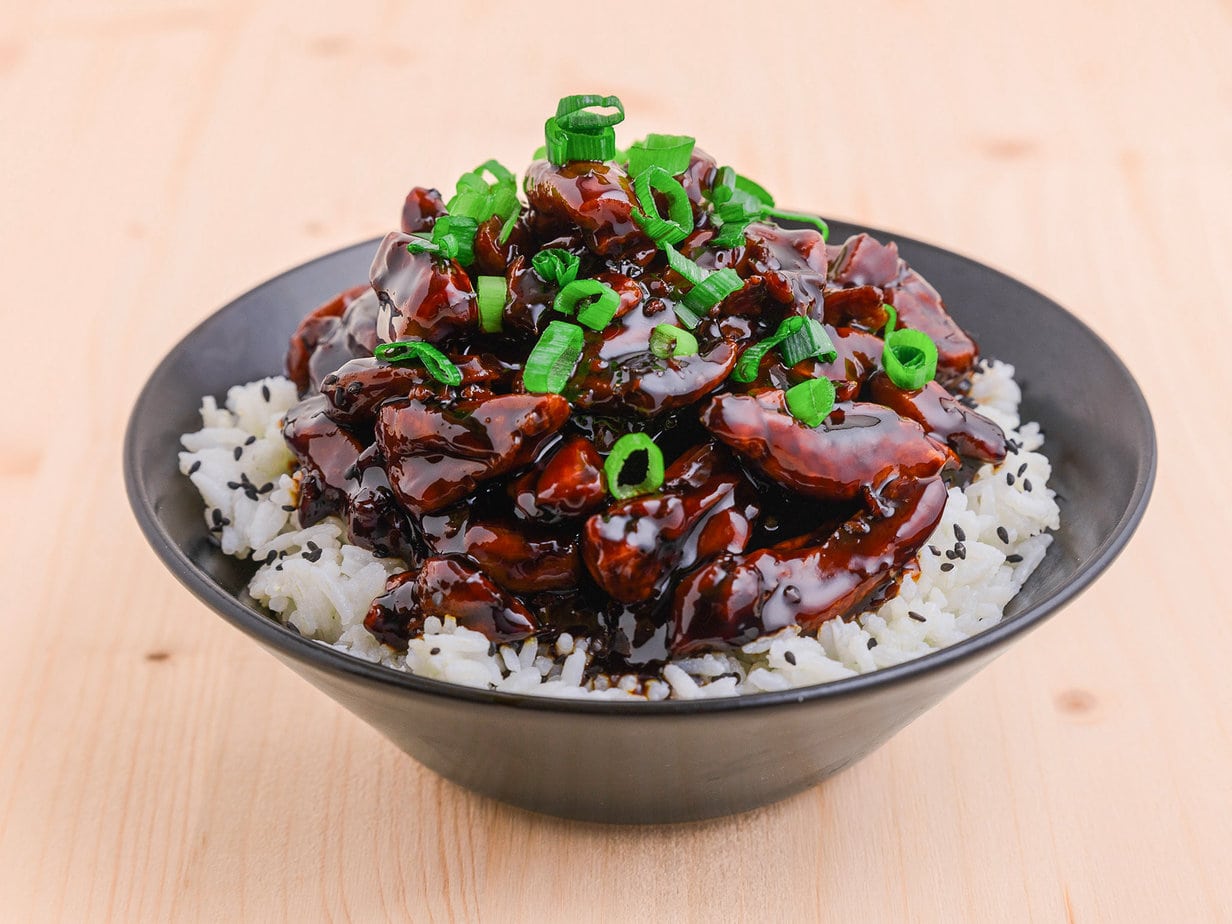
Indeed, the ingredients that compose it are part of the basic starter pack common to many Japanese sauces, but Unagi sauce stands out for its honey-like consistency and its characteristic caramelized taste.
Not at all fishy in taste. However, it works perfectly well with sushi or onigiri!
But then, why do we call it “eel sauce” if it doesn’t contain any? It’s rather curious when you know that the term “Unagi” literally translates to “eel”.
In Japan, it’s a fish that’s consumed quite regularly. And Unagi sauce is perfect (and very much appreciated) on grilled eel dishes, like Unagi Don (grilled eel on white rice, in the Donburi category).
It’s worth noting that originally, this sauce contained eel broth, which is no longer the case today. That explains quite a lot already!
If you’re already a bit familiar with Unagi sauce, you’ll notice that it’s often associated with the terms “Nitsume” or “Kabayaki”. It’s not always easy to keep track of all these names.
Kabayaki is first and foremost a dish of grilled eel skewers, but it’s also a term that refers to all grilled fish dishes similar to eel, meaning long and without scales.
It’s a dish called “Teriyaki” (yes, like the chicken), the type of cooking where skewers, eel in this case, are grilled then dipped in the thick sauce during cooking. The end result is what’s called “Unagi no Kabayaki”, which literally means “flame-grilled and glazed eel”.
As for Nitsume, it can be confusing. It’s a type of condiment mainly used for sushi, and Unagi sauce is part of it. Originally, Nitsume also contained eel broth.
Again, this is no longer the case. So don’t be surprised if you come across the terms “Nitsume” or “Kabayaki”; when it comes to sauces, you can’t go too wrong. Want to be sure? Follow this recipe that won’t take you any longer than understanding the difference between all these names!
The Main Ingredients of Unagi Sauce
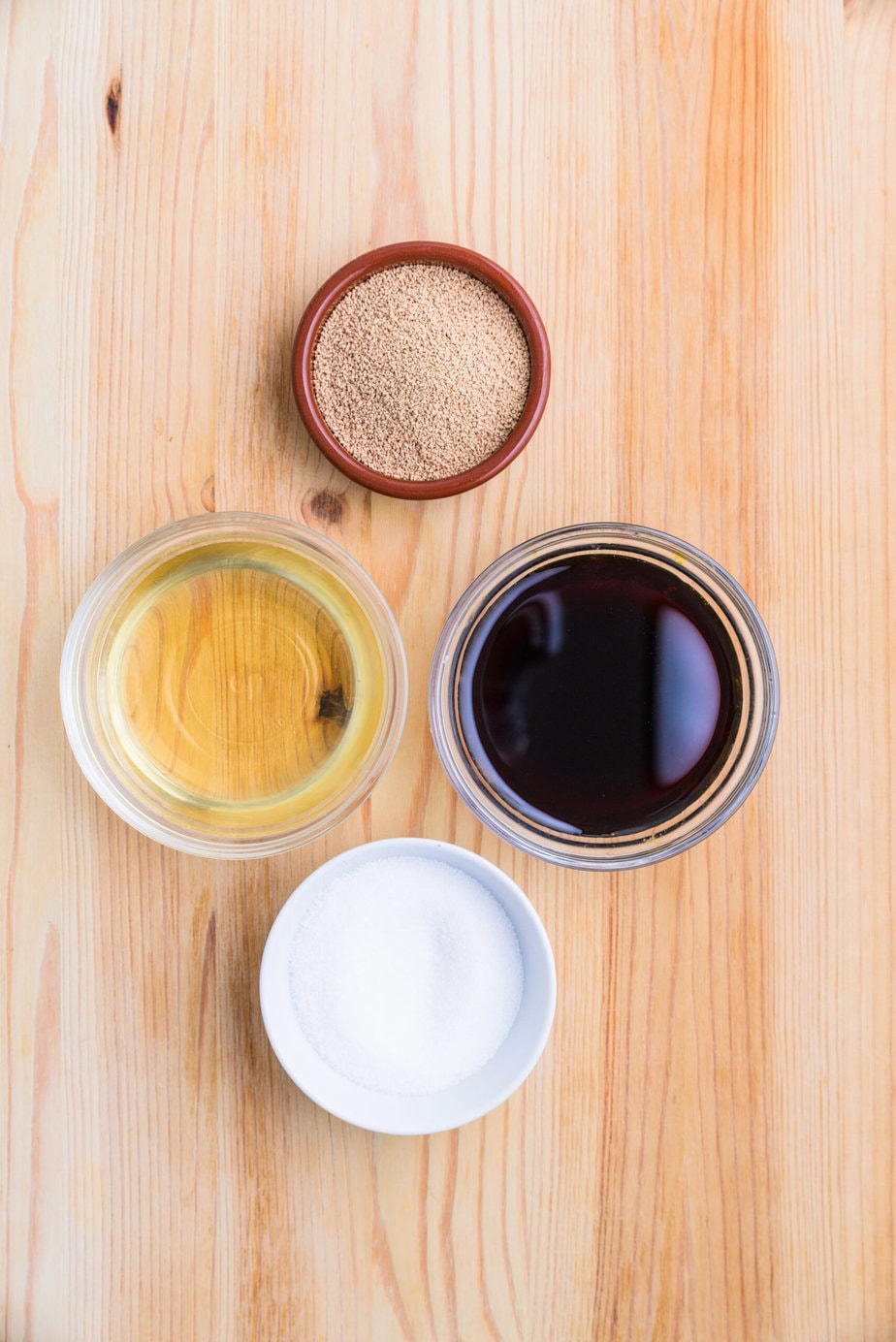
Mirin: a sweet rice wine that pairs particularly well with eel. Mirin adds some sweetness and a hint of acidity, contrasting with the saltiness of soy sauce. It also gives Unagi sauce that slight caramel taste in combination with sugar, which also helps thicken the sauce.
Light soy sauce: it brings a salty taste that balances the flavors of the sauce. Soy enhances and intensifies the taste of eel without masking other flavors with just the right amount of salt.
Dashi: in some recipes, sake is added instead. Personally, I prefer to use powdered dashi, it adds depth with its umami flavor.
Usually, I would tend to tell you that dashi should be avoided with fish, hence using it sparingly here. Nevertheless, eel is a rather delicate and refined fish. Therefore, dashi is absolutely not contraindicated in this recipe; it’s even a winning combination!
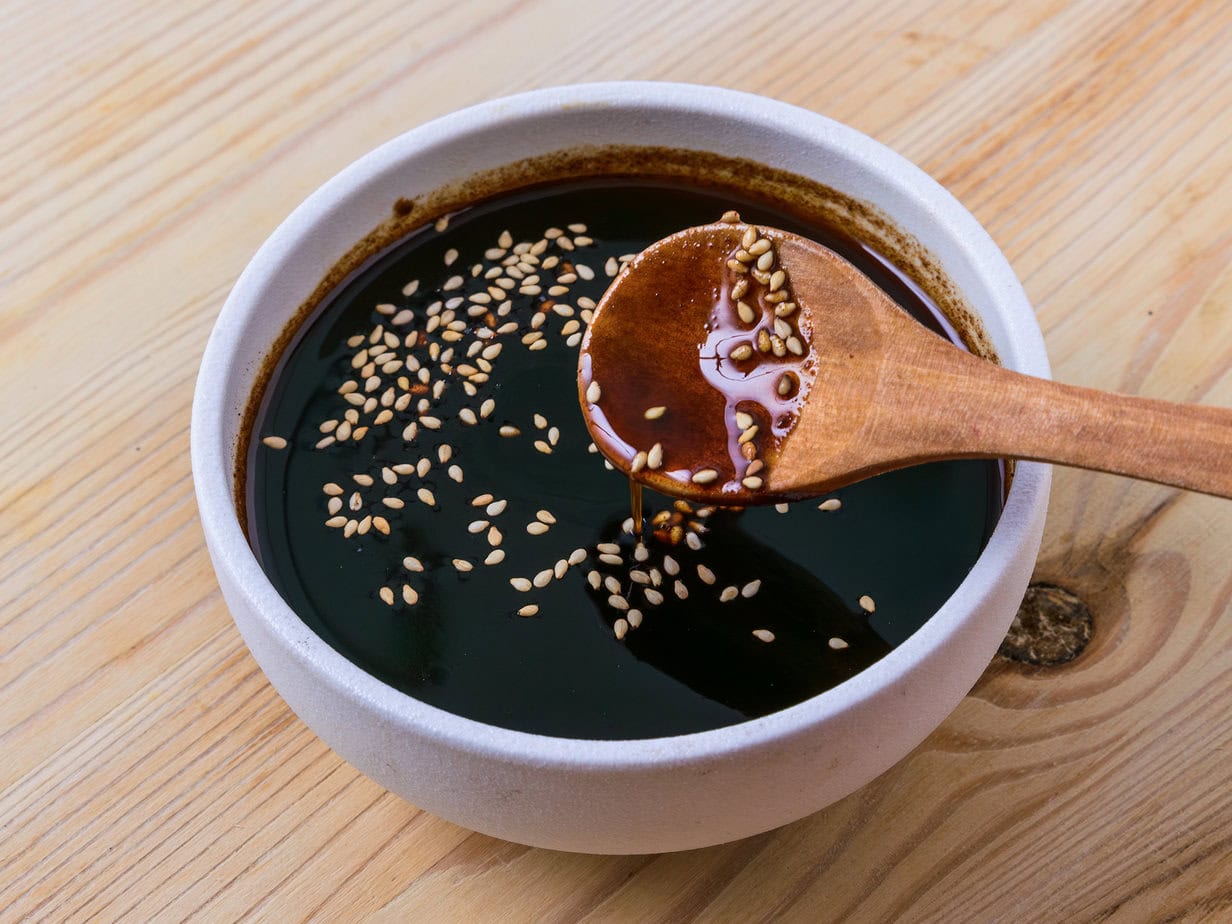
Unagi Sauce – Japanese Grilling Sauce
Ingredients
- 100 ml of mirin
- 100 ml light soy sauce or Japanese salty soy sauce such as Kikkoman
- 50 g of sugar
- 5 g of powdered dashi
Instructions
- In a small saucepan, mix the ingredients well100 ml of mirin, 100 ml light soy sauce, 50 g of sugar, 5 g of powdered dashi
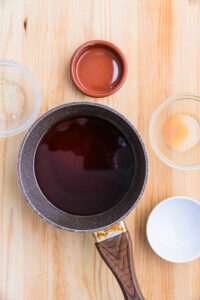
- Heat over medium-low heat and let reduce while stirring until thickened
